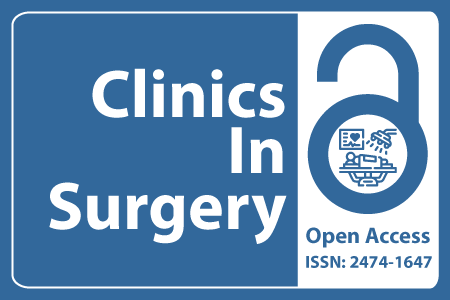
Journal Basic Info
- Impact Factor: 1.995**
- H-Index: 8
- ISSN: 2474-1647
- DOI: 10.25107/2474-1647
Major Scope
- Oral and Maxillofacial Surgery
- Ophthalmic Surgery
- Breast Surgery
- General Surgery
- Endocrine Surgery
- Gynecological Surgery
- Urology
- Colon and Rectal Surgery
Abstract
Citation: Clin Surg. 2017;2(1):1553.Research Article | Open Access
The Free Radial Forearm Flap versus the Pedicled Pectoralismajor Myocutaneous Flap for Quality Reconstruction of Oesophageal and Hypopharyngeal Defects and Literature Review
Athanasios Karonidis, Dimosthenis Tsoutsos, Sotiris Papouliakos, Evangelia Zaharioudaki, Athanasia Marinou and Zissis Pappas
Department of Plastic Surgery, General Hospital of Athens G Gennimatas, Greece
Department of Otorhinolaryngology, General Hospital of Athens G Gennimatas, Greece
*Correspondance to: Athanasios Karonidis
PDF Full Text DOI: 10.25107/2474-1647.1553
Abstract
Background: The aim of this study is to assess the efficacy of free radial forearm flap and pectoralis major flap for the reconstruction of hypopharyngo-oesophageal defects, highlighting the technical feasibility, complications, functional outcome and literature review.Methods: From 2012 to 2016, twelve patients with laryngeal carcinoma underwent laryngectomy, hypopharyngeal esophagectomy, and reconstruction of pharyngo-oesophageal defects with free radial forearm flapin eight cases andpedicled pectoralis major myocutaneous flap in four cases. Ten patients had partial defect, and two patients had total circumferential defect. The flap selection was based on the general condition of the patient. The patients with better general condition underwent microvascular free RFF reconstruction in contrast to debilitating patients who had PM reconstruction.Results: All flaps survived. The successful outcome was confirmed by swallowing test with gastrographin, and associated with oral alimentation, good uncomplicated swallowing and improved quality of life. Two patients with radial forearm flap microvascular reconstruction developed fistula formation andone stricture. Two patients with pectoralis major reconstruction developed fistula formation and stricture. Two patients died due to tumour recurrence. Oral alimentation was achieved in eleven patients. The patients who underwent radial forearm flap microvascular reconstruction reported better quality of life in terms of swallowing and cosmetic appearance comparing to pectoralis major reconstruction, whereas there were equal results in terms of speech.Conclusion: The radial forearm flap and the pectoralis major flap safeguard a feasible reconstruction of hypopharyngo-oesophageal neo-tube and provide satisfactory and consistent functional results. However the free radial forearm flap offers better quality reconstruction and is considered a superior reconstructive option for the patients who can tolerate major surgery.
Keywords
Radial forearm flap; Pectoralis major flap; Pharyngoesophageal defects; Cervical oesophagectomy, Laryngeal cancer, Microsurgery
Cite the article
Karonidis A, Tsoutsos D, Papouliakos S, Zaharioudaki E, Marinou A, Pappas Z. The Free Radial Forearm Flap versus the Pedicled Pectoralismajor Myocutaneous Flap for Quality Reconstruction of Oesophageal and Hypopharyngeal Defects and Literature Review. Clin Surg. 2017; 2: 1553.













